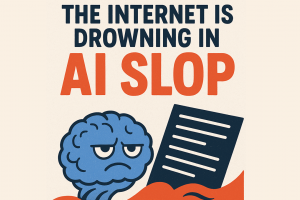This year’s Nobel Prize in Medicine illuminated one of the immune system’s greatest miracles: how it avoids attacking our own bodies. Scientists identified the so-called regulatory T cells and showed how the FOXP3 gene guides their function—revealing how immune balance is achieved. That discovery could transform treatments for autoimmune diseases, cancer, and organ rejection. Here’s a friendly, data-driven dive into the science, its promise, and what it might mean one day for you or someone you love.
Stop scrolling for a moment—your immune system just won the Nobel Prize. Actually, three scientists did: Mary Brunkow, Fred Ramsdell, and Shimon Sakaguchi were awarded the 2025 Nobel in Physiology or Medicine for revealing how our body keeps the immune system from turning against itself.
Imagine your immune system as a powerful army. It vanquishes viruses and bacteria—but what prevents it from attacking your own body? That question has haunted immunologists for decades. Their answer lies in a class of cells and a master gene—regulatory T cells and FOXP3—which act as internal peacekeepers. The discovery is already reshaping how we think about autoimmune disease, cancer immunotherapy, and transplantation.
In this article, I’ll walk you through:
-
The scientific journey behind this Nobelwinning discovery
-
Why it matters for your health
-
Real-world applications being developed now
-
What challenges and open questions remain
-
How this could change the future of medicine
Let’s explore how science peels back the mystery of self-tolerance—because this is more than academic: it’s a story about balance, survival, and hope.
1. The Immune Paradox: Why We Don’t Always Attack Ourselves
1.1 The great strength—and risk—of the immune system
Your immune system is a marvel. Every day, trillions of cells patrol your body, detecting threats from viruses, bacteria, fungi, or rogue cancer cells. T cells, B cells, antibodies, macrophages, dendritic cells—all coordinate to protect you.
But there’s a catch: the same systems that fight invaders could misfire and target your own tissues. Indeed, autoimmune diseases (like type 1 diabetes, rheumatoid arthritis, lupus, multiple sclerosis) occur when that safety fails.
For decades, scientists asked: how does the immune system discriminate between “foreign” and “self”? How do we maintain self-tolerance?
1.2 Early concept: central tolerance in the thymus
Before the Nobel discoveries, a core concept was central tolerance. T cells develop in the thymus, and those that react strongly to “self” proteins are removed (negative selection). This is a critical filter, but it’s imperfect. Some self-reactive T cells escape.
Therefore, an additional layer of control must exist—especially in the periphery (i.e. in tissues beyond the thymus). That is what the 2025 Nobel laureates uncovered.
2. The Breakthrough: Discovery of Regulatory T Cells & FOXP3
2.1 Sakaguchi’s bold hypothesis (1990s)
In 1995, Shimon Sakaguchi proposed that there must exist a specialized subset of T cells that suppress immune activity—“guardian cells” that prevent autoimmunity. He noticed paradoxical experimental results: mice lacking a thymus developed autoimmune disease, but injections of certain T cells prevented it.
He isolated T cells that expressed CD4 and CD25, and demonstrated they could suppress immune responses. He named them regulatory T cells (Tregs). Yet, many immunologists were skeptical: was this real, or artifact?
2.2 The Scurfy mouse and the hunt for the gene
Across the Atlantic, a puzzling mouse strain called “scurfy” was studied. Male mice born from this lineage had flaky skin, lymph node enlargement, and early death. Their immune system was attacking their own organs.
In 2001, Mary Brunkow and Fred Ramsdell co-identified a mutated gene in these mice, originally dubbed scurfin, later named FOXP3. This gene on the X chromosome seemed to be central to immune regulation. They showed that when FOXP3 is disrupted, mice lose functional regulatory T cells and develop fatal autoimmunity.
Concurrently, they connected human disease: mutations in FOXP3 in humans cause IPEX syndrome (immune dysregulation, polyendocrinopathy, enteropathy, X-linked). This parallel between mice and humans was a compelling proof.
2.3 Integrating the discoveries
Eventually, Sakaguchi and the others integrated the two threads: the Tregs he had postulated are regulated by the FOXP3 gene. FOXP3 is the “master regulator” that dictates the development and function of regulatory T cells, enabling them to exert suppressive function.
Thus, the 2025 Nobel Prize was awarded “for their discoveries concerning peripheral immune tolerance.”
In short: your immune system has “brakes”—regulatory T cells controlled by FOXP3—that restrain overactive responses and maintain harmony.
3. Why This Discovery Matters: Implications & Impact
This is not just a textbook win—it has ramifications across medicine and health.
3.1 Autoimmune diseases: a new therapeutic target
Autoimmunity arises when self-reactive immune cells evade suppression. Now, therapies could aim to increase regulatory T cell numbers or enhance FOXP3 function. In diseases such as type 1 diabetes, multiple sclerosis, lupus, and rheumatoid arthritis, modulating this pathway could restore balance.
Several clinical trials are already underway aiming at expanding Tregs, stabilizing FOXP3 expression, or delivering engineered regulatory T cells.
3.2 Organ transplantation & graft tolerance
Transplanted organs are perceived as foreign by the immune system. Current immunosuppressive drugs blunt the immune response broadly—leaving patients vulnerable to infections and side effects. But what if we could selectively induce tolerance via Tregs? The Nobel discovery opens the possibility of more precise immune modulation, reducing the need for lifelong immune suppression.
3.3 Cancer immunotherapy: turning the brakes off (carefully)
Interestingly, regulatory T cells suppress immune responses. In cancer, where one wants to unleash immunity, Tregs can be a hindrance. Tumors often recruit Tregs to create an immunosuppressive microenvironment. Understanding FOXP3 and Tregs gives us levers to tune immunotherapy: reduce Treg suppression in tumors while preserving tolerance elsewhere.
3.4 Precision medicine and biomarkers
FOXP3 expression, Treg counts, and functional assays may become key biomarkers for disease activity, relapse risk, or therapy responsiveness. In personalized health, measuring one’s immune balance could guide preventive interventions.
3.5 Broader insights into aging, infection, and inflammation
Chronic inflammation, “inflammaging,” immune exhaustion—all are tangled with regulation. Better knowledge of immune tolerance could yield strategies for healthy aging, controlling chronic infection, or managing vaccine responses in older adults or immunocompromised populations.
4. Real-World Data & Examples (Bridging Theory to Practice)
Let me give you a few concrete numbers and studies to ground the significance.
-
In IPEX syndrome (a human disease), FOXP3 mutations lead to lethal autoimmunity in infancy—highlighting how central this gene is to immune regulation.
-
In experimental animal models, transferring regulatory T cells can prevent or ameliorate autoimmune disease (e.g. in type 1 diabetes models).
-
In human trials, adoptive Treg therapy has been tested in conditions like graft-versus-host disease and type 1 diabetes, with some early promising safety profiles (though efficacy and scale-up remain challenges).
-
Some oncology trials are exploring depletion or functional inhibition of Tregs within tumor microenvironments to bolster anti-tumor immunity.
-
In transplantation, Treg-based tolerance induction is a major research frontier, with ongoing phase I/II trials.
Though the full translation is still emerging, the pathway is clear: regulatory T cell biology is no longer academic—it’s becoming clinical.
5. Why This Story Resonates (For You & Me)
Beyond scientific novelty, this is a story of balance, resilience, and potential—themes people care about in health, longevity, and wellness.
-
It’s deeply human: the body negotiating against itself, striving for equilibrium.
-
It offers hope: for autoimmune patients, transplant recipients, cancer sufferers.
-
It empowers: understanding one’s immune system is no longer mystique but gradual insight.
-
It invites curiosity: who knew our immune system has its own “governors”?
-
It’s timely: as more people care about personalized health, immunity, and prevention.
You don’t have to be a scientist to feel the wonder: this is a story about how our internal world works—and how breakthroughs made today may ripple into tomorrow’s therapies.
6. Challenges, Unknowns & Next Frontiers
No grand scientific finding is without caveats. Here are some hurdles and open questions:
6.1 Specificity & safety
Boosting Tregs globally might risk suppressing useful immune responses—e.g. reducing defenses against infection or cancer. Therapies must be targeted, context-dependent.
6.2 Stability and plasticity of Tregs
Regulatory T cells can lose FOXP3 expression under inflammatory conditions and convert to effector phenotypes. Ensuring stability is critical.
6.3 Delivery and scale of cell therapies
Engineering, expanding, transporting therapeutic Tregs is complex and costly. Ensuring accessibility beyond elite hospitals is nontrivial.
6.4 Inter-individual variation
Genetic variation, environmental factors, microbiome influences—all affect regulatory T cell dynamics. Personalized strategies will be needed.
6.5 Integrative systems-level understanding
Regulation doesn’t happen in isolation. Tregs interact with dendritic cells, cytokines, metabolic cues, epigenetic modifiers. Integrating FOXP3/Treg into the broader immune network is essential.
6.6 Long-term effects
What happens if we intervene early? Could we reset immune trajectories and prevent disease onset decades before symptoms? That’s speculative, but exciting.
7. What This Means for Your Health & What You Can Do
Although this discovery is in early translation, it already suggests several practical takeaways:
-
Immune balance matters. Chronic stress, pollution, poor sleep, gut dysbiosis—all may tilt the equilibrium toward inflammation or autoimmunity. Supporting regulatory pathways (e.g. via diet, sleep, microbiome health) is sensible.
-
Ask your doctor about immune biomarkers. As FOXP3/Treg assays become more available, asking about immune profiles may become part of preventive checkups.
-
Stay informed on Treg-based trials. If you or someone you care for has an autoimmune condition, new therapies may emerge in coming years.
-
Lifestyle remains foundational. Even with advanced immunotherapies, good nutrition, exercise, stress management, and sleep support proper immune regulation.
Final Thoughts & Invitation to Dialogue
We often celebrate the immune system’s power—but rarely its restraint. The 2025 Nobel Prize reminds us that health is not just about “fighting more,” but also about knowing when to stop.
This is a turning point. As immunology enters a new era of precision control, the barrier between discovery and therapy narrows. Over the coming years, we may see Treg-based cures, FOXP3-modulating drugs, and personalized immune-balance diagnostics. Whether you deal with autoimmunity, support someone with chronic disease, or simply care about future health, this story is for you.
I invite you:
-
Share this article if you found it inspiring or illuminating.
-
Comment with any questions—happy to dig deeper.
-
Tag someone who’d be intrigued by the notion that our body has its own peacekeeping cells.
-
Let me know: which condition (autoimmunity, cancer, transplant) excites you most in the light of this discovery?
Thank you for reading. May your immune system be powerful and wise.


























